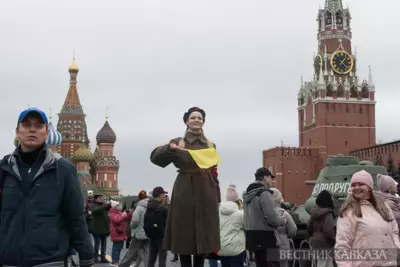Susanna Petrosyan, Yerevan. Exclusively to Vestnik Kavkaza
Since the beginning of the year more than three months have passed, but the economic situation in Armenia doesn’t reflect any positive tendencies. According to official data, the economic growth is 7.2%; However, the hopeful figures have nothing in common with reality and some official indexes show an increase of the migration level and reduction of foreign investments.
The government of the country, where the poverty level is more than 33% and the official unemployment rate is 16%, has taken no steps toward reduction of poverty.
Moreover, on February 1st amendments to the tax laws, which were adopted last December, began their operation. They caused indignation of dentists. According to the amendments, a dentist should pay a tax for “a chair” – from 60 to 80 thousand drams ($1=415 drams) depending on a hospital’s location. Previously dental hospitals paid social expenditures, income tax, profit tax of 20% in a year, which was about 15 thousand drams per month. Due to massive protests of dentists the government made corrections aimed at lightening of new laws. However, amendments touched on the other social group of the population. According to some sources, this change was made in favor of oligarchs who decided to open a big hospital.
Since the beginning of 2013 small trade facilities pay turnover tax of 3.5% instead of previous 20%. It seemed to be a positive change, but the rate of interest is calculated not from net income, but total turnover which is much bigger. According to experts, total turnover tax significantly improved tax burden for small business facilities.
Economists are also worried about the continuing reduction of investments in Armenia’s economy. According to official data, Russian and the USA investments into Armenia reduced by 27.5% in 2012.
According to economist Vaagan Khachatrian, “the data on 2012 shows that Armenia has no favorable conditions for investments. Three main factors are needed – peace, reasonable laws, and smart management. Unfortunately, Armenia is situated in a conflict zone, and the laws are used selectively. As for the government, the body which forms it gained no trust among the population. Moreover, the operating oligarchic system in the country doesn’t allow equal competition, which influences investments.”
The other negative phenomenon characterizing the current economy is still capital’s outflow which surpassed $500 million last year, according to some experts. Permanent huge dollar inflows for supporting dram’s course, which continues to fall, lead to reduction of Armenia’s external reserves. Last year Armenian external reserves were reduced by $170 million, in March 2013 – by $100 million.
“Capital outflow from Armenia and reduction of direct investments will be strong tendencies of the Armenian economy,” the former head of the Central Bank Bagrat Asatryan believes. According to the prime minister of Armenia Tigran Sarkisyan, the government is aware of capital outflow, but the government sees no alarming tendencies in this sphere.
To be continued





